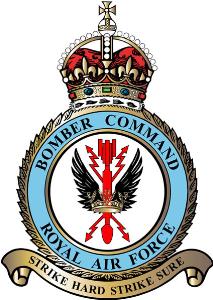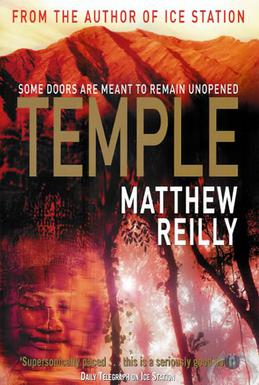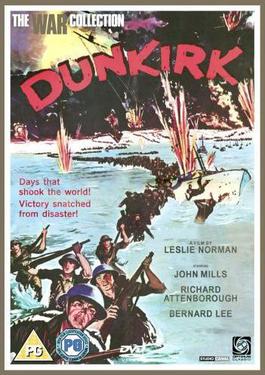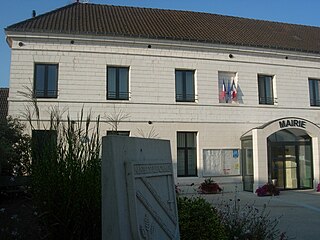Plot
Sometime in World War II, German SS officers discover ancient ruins which contain stone gargoyles. They bring the gargoyles to life with blood so they can combat U.S. forces. Instead of complying, the gargoyles kill the Nazis and then attack local French villages. After an American bomber attack is devastated by the gargoyles, the US launches another bomber force in an attempt to destroy them. The crew of a bomber, the "Grey Ghost" flown by Major John Gustafson (Joe Penny) is attacked by the gargoyles and crashes.
The crew parachute to safety before the bomber crashes, but are again attacked by gargoyles. Some are rescued by British soldiers, others by local villagers. The remaining crew meet in a church the locals are sheltering in. A woman named Sophie fills them in on the legend behind the gargoyles.
She relates the story of a group of pagans that built a statue of their "horned king" deity, Vorthorn out of a mysterious 'bloodstone'. It was then brought to life to take vengeance on their persecutors. It destroyed their enemies, but Vorthorn learned that he could bring other stone gargoyles to life itself. He built a gargoyle army and then turned on its creators and killed them all.
The gargoyles can be defeated by piercing the heart of Vorthorn with the Spear of Destiny. It is discovered that the knight who defeated the gargoyles was buried with the spear. To overcome the gargoyles the flight crew must retrieve the spear.
Vorthorn attacks, tearing a soldier in half. The church and village are then bombed by German Junkers Ju 88 bombers, which the gargoyles attacks. The American aircrew, the village woman and British soldiers leave to find the spear. The German army arrives looking for the aircrew and kill a villager to force the others to talk.
Two of the aircrew, Porter and Nash, are captured by the German army and left tied up in the open to distract the gargoyles.
The tomb is reached and the spear recovered. However, the Germans arrive just then and attack. Most of them are killed, but Gus (Joe Penny) is shot and killed by the last German Officer. The Officer is then shot, and the gargoyles arrive, but hold back in fear of the Spear.
Down to four, two British, Sophie and one airman discover their friends remains, then continue on to the ruins to kill Vorthorn. They enter the ruins and are again attacked by the gargoyles. They kill many and also retrieve many maps and other documents left by the Nazis. One of the fliers and a British soldier fly a German Heinkel He 111 bomber up to confront the Gargoyles, while the remaining airman and the village woman on the ground are also attacked. Vorthorn is rammed by the bomber and those aboard stab him with the Spear, returning him to stone. All the other gargoyles also turn back into stone, just in the nick of time to save the woman and airman below in the ruins.

Operation Chastise, commonly known as the Dambusters Raid, was an attack on German dams carried out on the night of 16/17 May 1943 by 617 Squadron RAF Bomber Command, later called the Dam Busters, using special "bouncing bombs" developed by Barnes Wallis. The Möhne and Edersee dams were breached, causing catastrophic flooding of the Ruhr valley and of villages in the Eder valley; the Sorpe Dam sustained only minor damage. Two hydroelectric power stations were destroyed and several more damaged. Factories and mines were also damaged and destroyed. An estimated 1,600 civilians – about 600 Germans and 1,000 enslaved labourers, mainly Soviet – were killed by the flooding. Despite rapid repairs by the Germans, production did not return to normal until September. The RAF lost 56 aircrew, with 53 dead and 3 captured, amid losses of 8 aircraft.

RAF Bomber Command controlled the Royal Air Force's bomber forces from 1936 to 1968. Along with the United States Army Air Forces, it played the central role in the strategic bombing of Germany in World War II. From 1942 onward, the British bombing campaign against Germany became less restrictive and increasingly targeted industrial sites and the civilian manpower base essential for German war production. In total 501,536 operational sorties were flown, 2.25 billion pounds of bombs were dropped and 8,325 aircraft lost in action. Bomber Command crews also suffered a high casualty rate: 55,573 were killed out of a total of 125,000 aircrew, a 44.4% death rate. A further 8,403 men were wounded in action, and 9,838 became prisoners of war.

Temple is a thriller novel written by Australian author Matthew Reilly and first published in 1999. Like Reilly's other books, Temple's major attractions are the fast pace and the complexity of the action scenes.

Operation Freshman was the codename given to a British airborne operation conducted in November 1942 during World War II. It was the first British airborne operation using Airspeed Horsa gliders, and its target was the Vemork Norsk Hydro hydrogen electrolysis plant in Telemark, Norway which produced heavy water as a by-product.

Dunkirk is a 1958 British war film directed by Leslie Norman that depicts the Dunkirk evacuation of World War II, and starring John Mills, Richard Attenborough, and Bernard Lee. The film is based on the novels The Big Pick-Up by Elleston Trevor and Dunkirk co-authored by Lt Col Ewan Butler and Major J. S. Bradford.

The 9th SS Panzer Division "Hohenstaufen" was a Waffen-SS armoured division of Nazi Germany during World War II. It participated in battles on both the Eastern and Western Fronts. The division was activated in December 1942. Many of the men of the division were young German conscripts, with a cadre of NCOs and staff from the SS Division Leibstandarte and other Waffen SS divisions. Hohenstaufen took part in the relief of German forces in the Kamenets-Podolsky pocket, the Normandy battles, Operation Market Garden, the Ardennes Offensive and Operation Spring Awakening. The division surrendered to the United States Army on 8 May 1945, at Steyr.
No. 75 Squadron was a unit of the Royal Flying Corps and Royal Air Force in World War I and the RAF in World War II. In 1940–1945, it was a bomber unit composed mainly of New Zealand-born personnel. In October 1945, the squadron number – along with its heraldry and honours – was relinquished by the RAF and transferred to the Royal New Zealand Air Force, officially becoming No. 75 Squadron RNZAF. No other RAF squadron has been gifted in this way, to another Commonwealth air force.
Sharpe's Sword is a 1995 British television drama, the eighth of a series screened on the ITV network that follows the career of Richard Sharpe, a fictional British soldier during the Napoleonic Wars. It is based on the 1983 novel of the same name by Bernard Cornwell, though it is set a year later (1813) than the book.

Mailly-le-Camp is a commune in the Aube department in north-central France.
"A Beast With Two Backs" is a television play by Dennis Potter, first broadcast on BBC1 on 20 November 1968 as part of The Wednesday Play strand.

The Battle of Graveney Marsh, on the night of 27 September 1940 in Kent, England, was the last ground engagement involving an organized foreign force to take place on the mainland of Great Britain. The fighting took place between the crew of a shot-down German Junkers Ju 88A-1 bomber from KG 77 and a detachment of soldiers from the 1st Battalion, London Irish Rifles (1 LIR), in Seasalter on the north Kent coast. The Ju 88, W.Nr 088 8099, 3Z+EL, and nicknamed Eule ("Owl") by its crew, was a new model and had only entered service two weeks earlier. The British forces were aware of the new model and had issued orders to capture one intact if at all possible. It was crewed by Unteroffizier (Uffz) Fritz Ruhlandt (pilot), Feldwebel Gotthard Richter ; Uffz Erwin Richter ; and Flieger (Airman) Jakob Reiner (gunner).

Line of Demarcation is a 1966 war drama film written and directed by Claude Chabrol. Its title in French is La Ligne de démarcation. It is based on upon the memoir Mémoires d'un agent secret de la France libre et La Ligne de démarcation by Gilbert Renault under his pseudonym Colonel Rémy.

The Australian contribution to the Battle of Normandy involved more than 3,000 military personnel serving under British command. The majority of these personnel were members of the Royal Australian Air Force (RAAF), though smaller numbers of Australians serving with the Royal Navy and British Army also participated in the fighting prior to and after the Allied landings on 6 June 1944. While all the RAAF units based in the United Kingdom (UK) took part in the battle, Australians made up only a small portion of the Allied force.
Antis (1939–1953), also known as Ant, was a dog who received the Dickin Medal in 1949 from the People's Dispensary for Sick Animals for bravery in service in England and North Africa during the Second World War.

Hercules, Samson and Ulysses is a 1963 Italian Metrocolor peplum film directed by Pietro Francisci.
Attacks on parachutists, as defined by the law of war, occur when pilots, aircrew, and passengers are attacked while descending by parachute from disabled aircraft during wartime. Such parachutists are considered hors de combat and it is made a war crime to attack them in an interstate armed conflict under Additional Protocol I to the 1949 Geneva Conventions. However, firing on airborne forces who are descending by parachute is not prohibited.
Colonel Václav Robert Bozděch was a Czech air gunner of World War II. He was a British Royal Air Force (RAF) squadron gunner and commander of training centers.

The bombing of Rangoon was a series of air raids conducted by the Imperial Japanese Army Air Service that took place between December 1941 to March 1942 during the Burma Campaign of World War II. The capital city of Rangoon was the first to be attacked after Japan executed air raids on Burma in preparation for its invasion of the country weeks following its declaration of war upon the United States and the United Kingdom on December 8, 1941.

The aircrews of RAF Bomber Command during World War II operated a fleet of bomber aircraft carried strategic bombing operations from September 1939 to May 1945, on behalf of the Allied powers. The crews were men from the United Kingdom, other Commonwealth countries, and occupied Europe, especially Poland, France, Czechoslovakia and Norway, as well as other foreign volunteers. While the majority of Bomber Command personnel were members of the RAF, many belonged to other air forces – especially the Royal Canadian Air Force (RCAF), Royal Australian Air Force (RAAF) and Royal New Zealand Air Force (RNZAF). Under Article XV of the 1939 Air Training Agreement, squadrons belonging officially to the RCAF, RAAF, and RNZAF were formed, equipped and financed by the RAF, for service in Europe. While it was intended that RCAF, RAAF, and RNZAF personnel would serve only with their respective "Article XV squadrons", in practice many were posted to units of the RAF or other air forces. Likewise many RAF personnel served in Article XV squadrons.

The bombing of Obersalzberg was an air raid carried out by the Royal Air Force's Bomber Command on 25 April 1945 during the last days of World War II in Europe. The operation targeted Obersalzberg, a complex of residences and bunkers in Bavaria which had been built for Adolf Hitler and other key members of Germany's leadership. Many buildings in the complex were destroyed, though Hitler's residence and the bunker network were only slightly damaged. Two Allied bombers were shot down with the loss of four airmen, and 31 Germans were killed.













